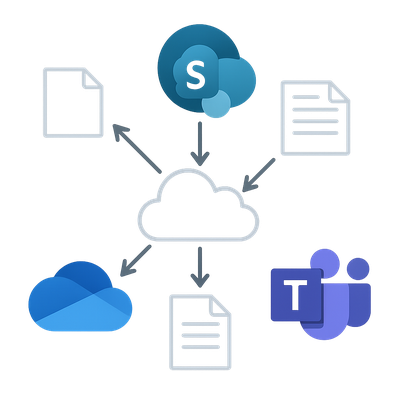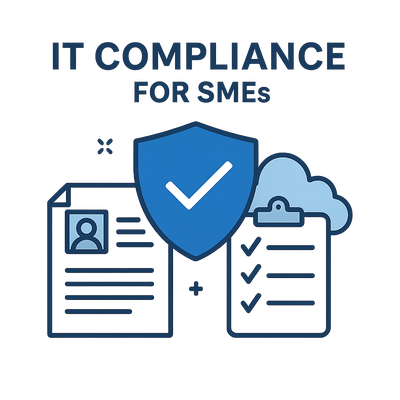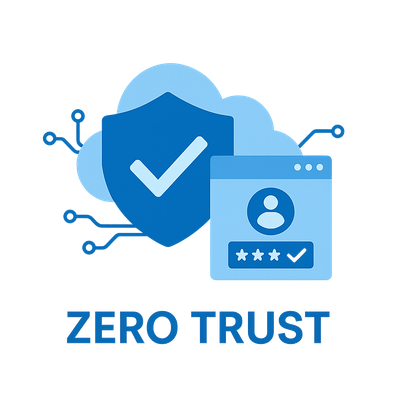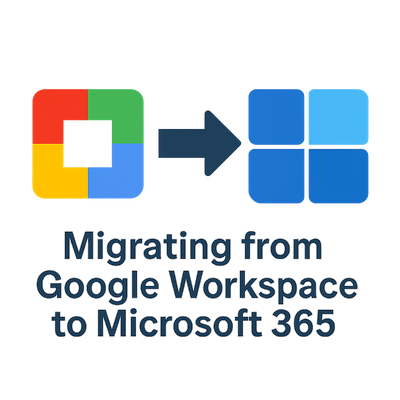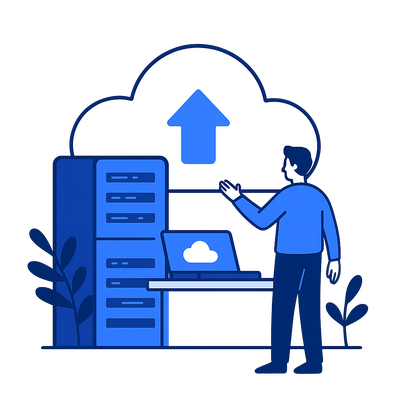
By Geek - May 2025
Cloud adoption has reshaped how small businesses operate, compete, and grow. Once viewed as a costly enterprise-only tool, cloud technology is now essential for agility, collaboration, and data protection. As of 2025, most small businesses rely on at least one cloud-based service, from accounting and file storage to CRM and backup. Yet, many are still navigating the challenges of integration, security, and long-term cost management.
What Cloud Adoption Means for Small Business?
Cloud adoption refers to moving IT infrastructure, data, and applications from local servers to online environments managed by service providers. Instead of maintaining expensive on-site hardware, small businesses can access scalable, subscription-based systems that grow with them. The cloud covers everything from Microsoft 365 and Google Workspace to accounting platforms, project management tools, and full-scale hosted servers.
The Acceleration of Cloud Use After 2020
The pandemic years rapidly accelerated cloud adoption as remote work became essential. Businesses that previously relied on in-office systems turned to cloud tools for communication, document sharing, and customer engagement. What began as a short-term solution evolved into a permanent shift. Today, cloud platforms are not only about accessibility but also about efficiency, automation, and resilience.
“Cloud adoption is no longer a trend, it’s the foundation for how small businesses stay competitive.”
Key Drivers of Cloud Adoption
- Scalability: Cloud platforms adjust easily as your business grows, avoiding large upfront hardware investments.
- Cost efficiency: Pay-as-you-go pricing reduces capital expenditure and allows predictable budgeting.
- Collaboration: Teams can work together in real time from any location using shared applications and files.
- Security: Major cloud vendors now offer enterprise-grade security that exceeds most on-premises setups.
- Business continuity: Cloud backups and disaster recovery systems protect against data loss or local outages.
Common Areas of Cloud Use
Most small businesses adopt the cloud in stages. Popular starting points include:
- Email and productivity suites such as Microsoft 365 or Google Workspace.
- Accounting and finance through Xero, QuickBooks Online, or MYOB Advanced.
- Customer relationship management (CRM) systems like HubSpot or Zoho CRM.
- File storage and sharing via OneDrive, Dropbox, or Google Drive.
- Backup and recovery using cloud storage providers for off-site redundancy.
Challenges Facing Small Businesses
While the benefits are clear, small businesses often face hurdles when adopting cloud solutions:
- Integration complexity: Connecting cloud apps with existing software can be difficult without technical guidance.
- Cost creep: Subscription costs accumulate over time, especially when multiple services overlap.
- Data security and privacy: Understanding compliance obligations such as the Australian Privacy Principles (APPs) is crucial.
- Vendor lock-in: Migrating from one provider to another can be costly and time-consuming.
- Connectivity dependence: Reliable internet access remains vital for consistent performance.
The Security Perspective
Security concerns once held many small businesses back from cloud adoption, but today’s platforms offer advanced protection, including encryption, multifactor authentication (MFA), and continuous monitoring. However, security is a shared responsibility. Providers secure the infrastructure, while businesses must enforce user access policies, train staff, and configure permissions properly.
Consultants play a key role in bridging this gap, configuring accounts, enabling MFA, setting up conditional access, and ensuring compliance with data handling standards. This proactive approach helps prevent common issues like unauthorised access and misconfigured file sharing.
Cloud Cost Management
Cost control is an ongoing challenge. Subscription services can become expensive as teams add more users and tools. Regular audits help identify redundant apps and unused licences. Migrating workloads strategically, for example, hosting data backups in lower-cost tiers, can also reduce expenses. The goal is to achieve balance between performance, flexibility, and budget efficiency.
Hybrid and Multi-Cloud Environments
Many small businesses now operate in hybrid environments, combining on-premises systems with cloud services. For example, a firm may host its accounting data in the cloud but maintain a local server for specialised software. Others adopt multi-cloud strategies to reduce dependency on a single vendor. While these setups increase flexibility, they also require careful planning to avoid data silos and integration issues.
The Role of AI and Automation in Cloud Growth
Artificial intelligence is becoming a major driver of cloud value. Modern platforms integrate AI features for forecasting, document summarisation, and workflow automation. Microsoft 365 Copilot and Google Duet AI, for instance, enhance user productivity within existing tools. Small businesses that adopt these AI-enabled services early gain competitive advantages through efficiency and insight.
Cloud Adoption and Compliance
Compliance is now a major factor in cloud decision-making. Industries such as healthcare, legal, and finance must follow strict data residency and access rules. Cloud providers typically offer compliance certifications (ISO, SOC, GDPR) and allow data storage within specific regions. A consultant can help map these requirements to provider capabilities and ensure that configurations align with industry standards.
Preparing for the Future
The cloud landscape is evolving rapidly. Edge computing, AI integration, and global collaboration platforms will continue to shape how small businesses operate. Success depends not just on adopting the cloud but on managing it effectively, ensuring systems are secure, integrated, and optimised for changing business needs.
“Cloud adoption is not a one-time project. It’s a continuous strategy for how your business uses technology to grow.”
How Can We Help You?
We help small businesses plan, implement, and optimise their cloud strategy. We assess your current systems, identify where cloud adoption can deliver the most value, and manage migration from on-premises to cloud-based platforms. We also ensure that your data remains secure and compliant, while controlling costs and training your team to use new tools effectively. With our guidance, your business can modernise operations, improve resilience, and stay ahead of competitors.



